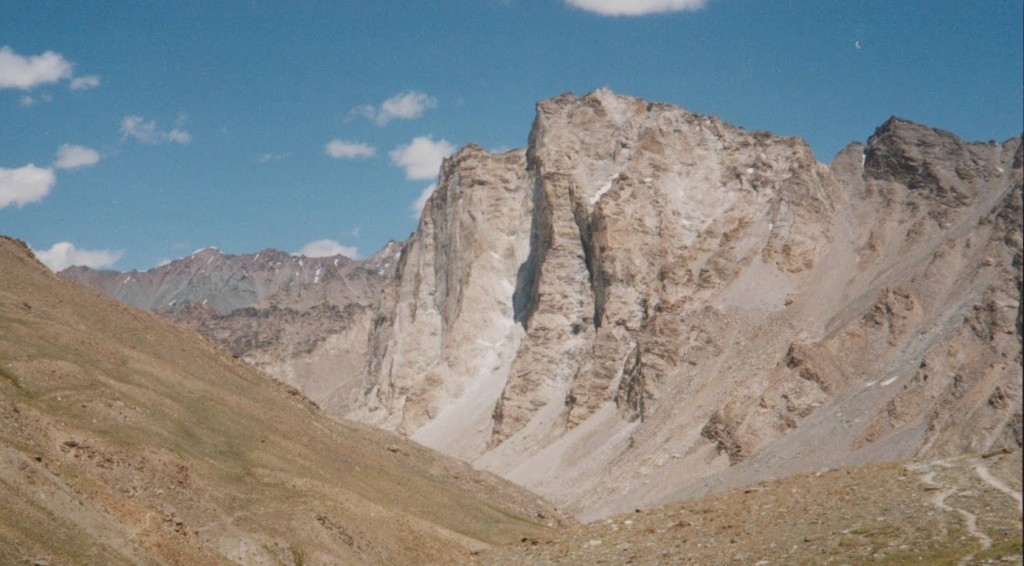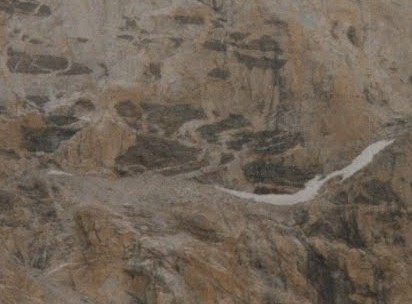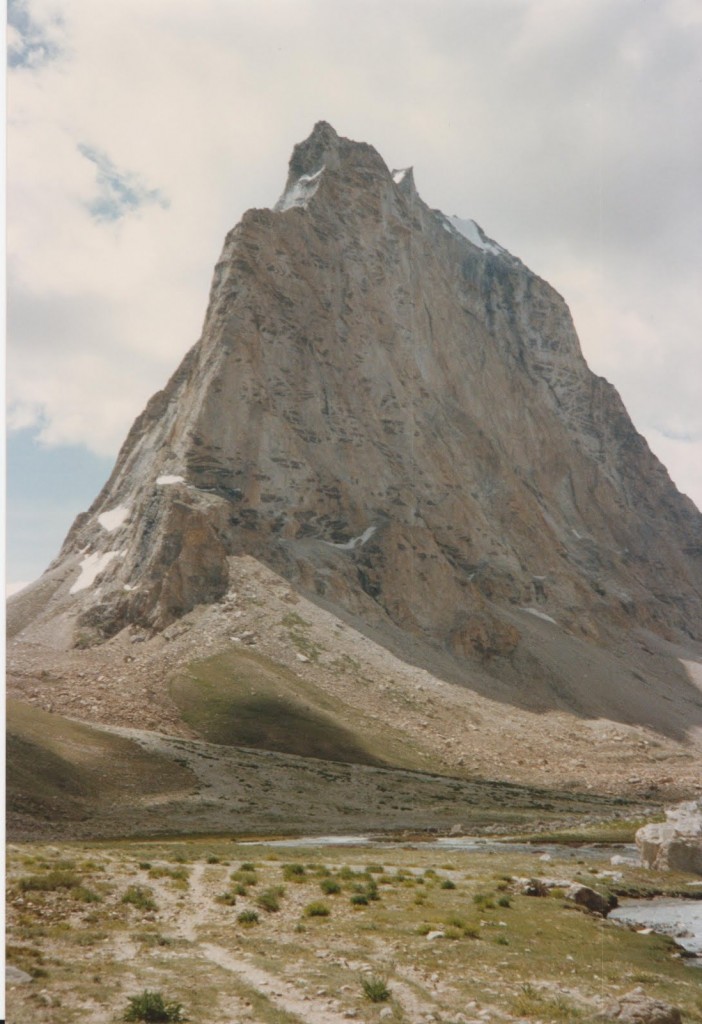I’ve been writing a lot of rather ambitious wordy posts about Himalayan geology (perhaps too many, too ambitious) so I thought I’d give you a post with visual impact for a change. I can’t resist some words of explanation but I hope the pictures would speak for themselves, if I let them.
I’ve some pictures from the Indian Himalaya. I’ve put a satellite image of the area up in WoGE #322 and talked about growing a beard while here already.
Trekking in the Himalaya, you get used to amazing views. But this was a taste of something special – Gumbaranjon peak, approached from the south.
The main buff-coloured cliff face is granite, with dark layers of xenolith. The green/purple rocks on the right skyline are behind, on the other side of a major extensional detachment (in the heart of a compressional orogeny).
Walking closer and around the base, we get a better view. The dark xenoliths and light granite make it a bit like looking at a negative photo. The eye tries to trace the pattern of granite intrusion by putting patterns into the places where the xenoliths aren’t. There are hints here that the intrusion process wasn’t simple.
That’s a fold of granite in a xenolith! It looks like there must be deformation active during the intrusion process. An early dyke has been folded and now sits in a xenolith surrounded by granite. It is very unwise to infer strain from a fold (if you don’t know the initial orientation), but its interesting that the nearly extensional structure is top to the north, which corresponds to a top to the left sense of shear in this photo.
Looking at the rocks at the base on the cliff gives more evidence of syntectonic intrusion.
The central block shows undeformed tourmaline muscovite granite sitting in a triangular space within metamorphic rocks. The shape looks like a ‘strain shadow’ around porphyroclasts in a mylonite.
All good things come to an end, but as we walked away from Gumbarajon it showed us its most majestic profile.
Click for more information on the Geology of this area.






Spectacular geology! That wall would make a first class lesson in relative age relations – and a wonderful subject for a GigaPan.
Your readers may also be interested in seeing more Himalayan Geology in this GigaPan Gallery I recently compiled.
Those Gigapans are fantastic Ron, well worth spending some time on.
in ladakh there is a mountain it hit volcano many yera ago